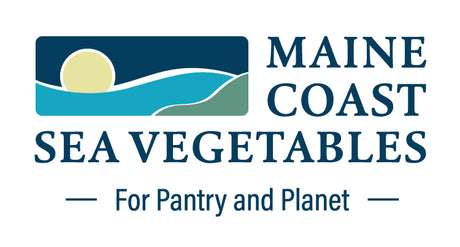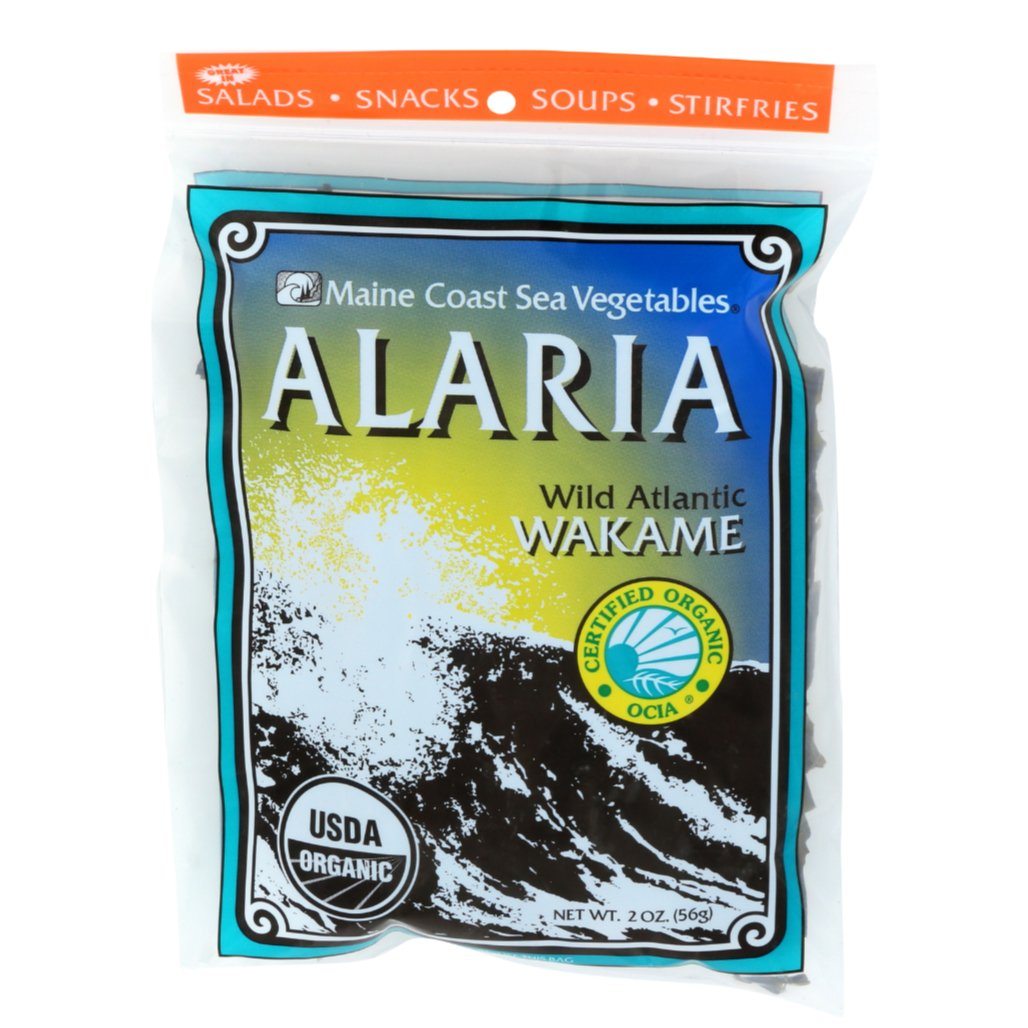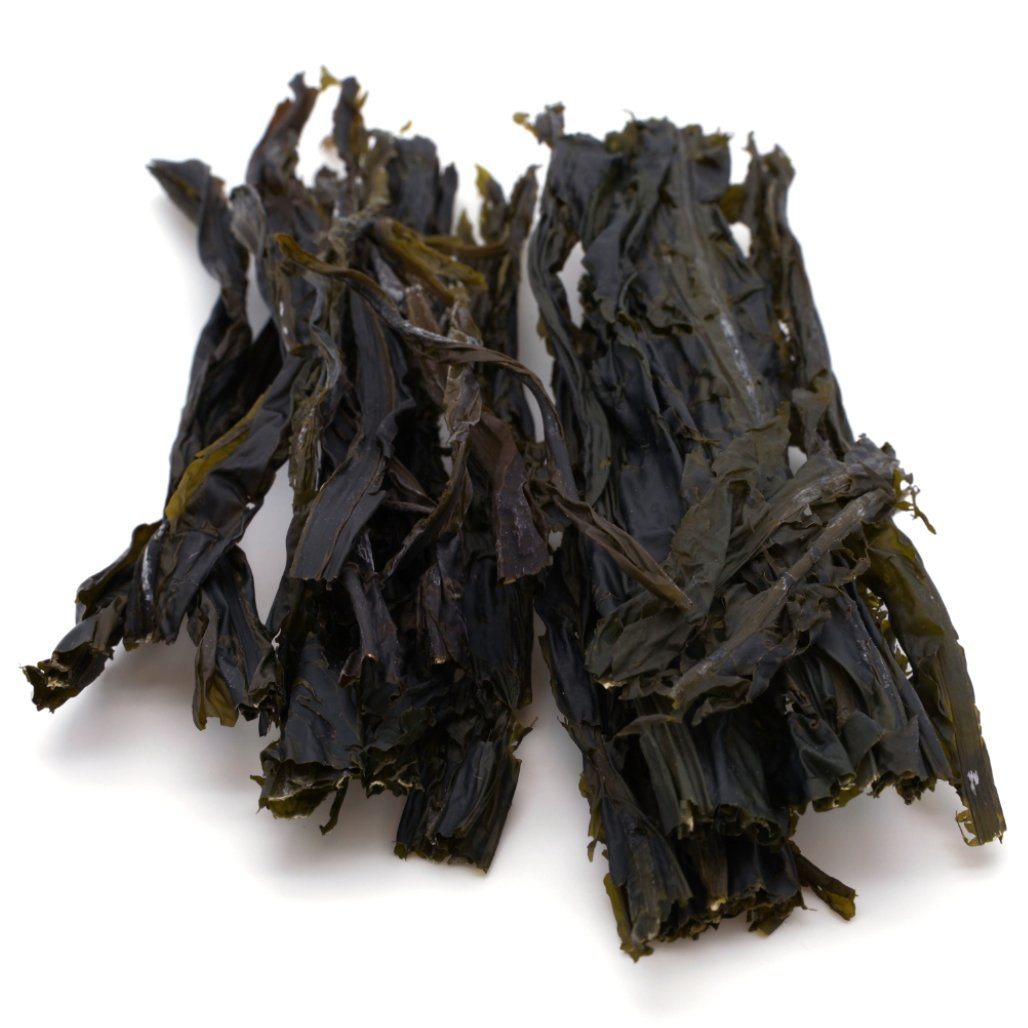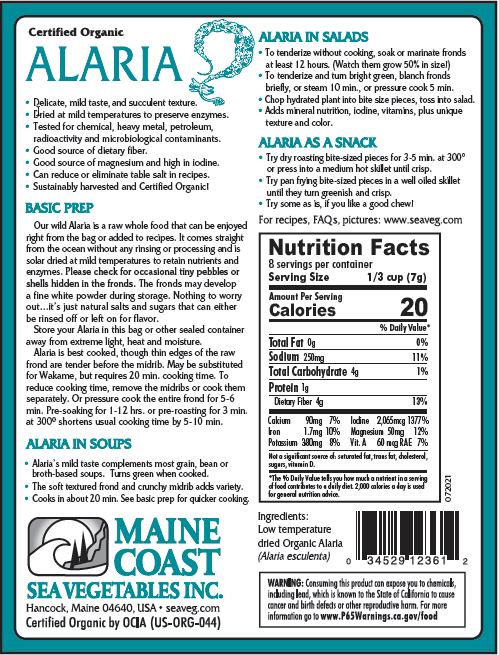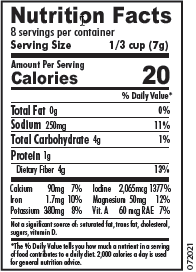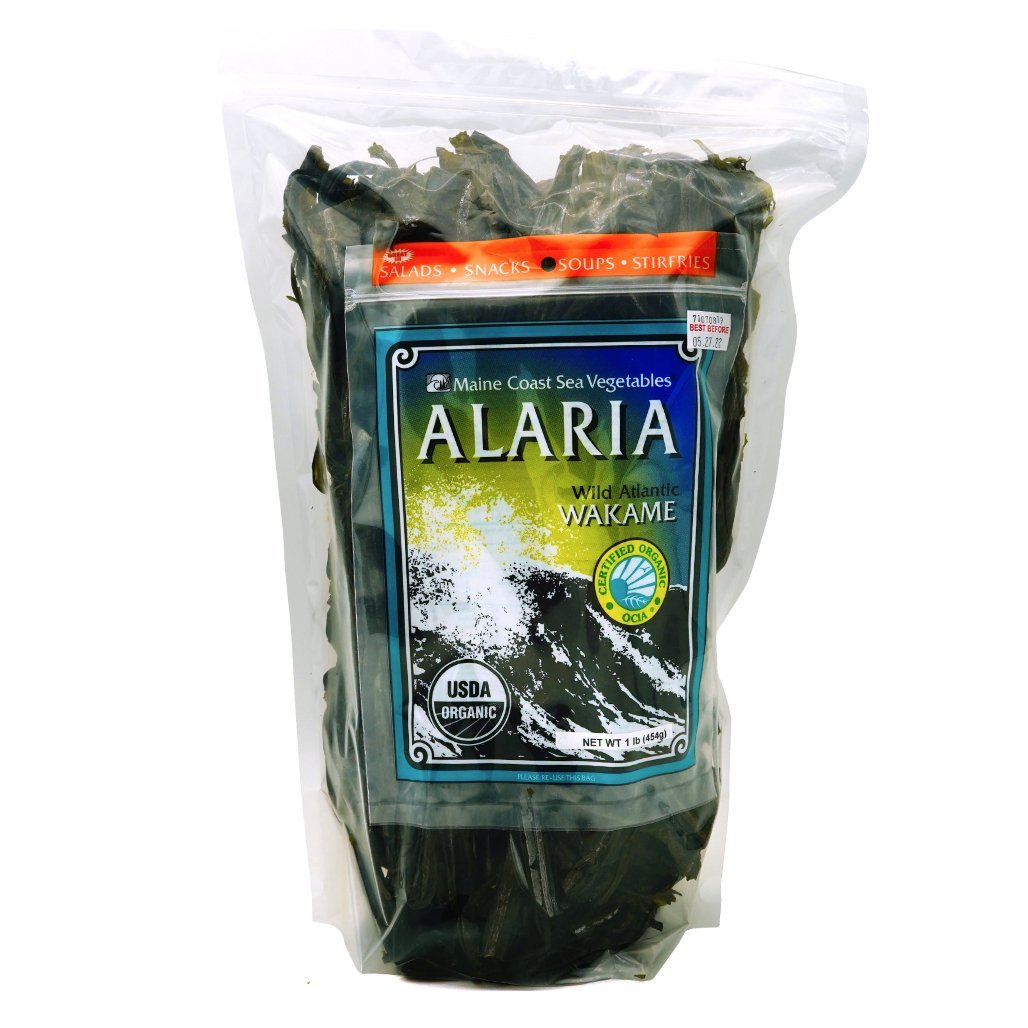Description
Enjoy the umami-rich and nutritious taste of premium, certified organic Alaria (Alaria esculenta) whole leaf seaweed. Our sustainably wild-harvested Alaria, also known as winged kelp or "wild Atlantic wakame," is packed with essential nutrients and minerals like vitamin A, iron, potassium, magnesium, chlorophyll, B vitamins, dietary fiber, and iodine. Gathered from the pristine waters of the North Atlantic, our Alaria is lab-tested for quality and contaminants. Available in the retail bag, bulk packaging for non-resale* and sample portions for new sea vegetable lovers.
- Our Alaria whole leaf is Certified Organic and sustainably harvested from the pristine waters of the North Atlantic.
- Dried at mild temperatures to preserves enzymes, nutrients, and the environment, ensuring maximum nutrition and quality.
- Alaria is packed with essential nutrients and minerals like vitamin A, iron, potassium, magnesium, chlorophyll, B vitamins, dietary fiber, and high levels of iodine (about 280 mcg per gram).
*Important Note: if you repackage our products they cannot be resold under our brand name and the Organic Certification claim is no longer valid.
